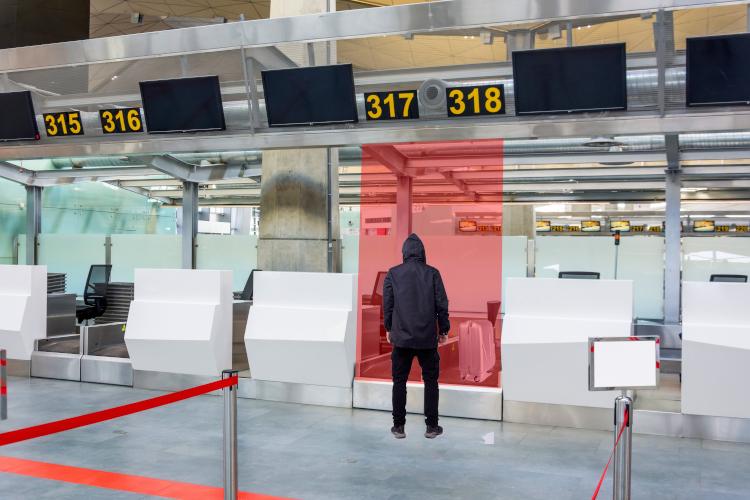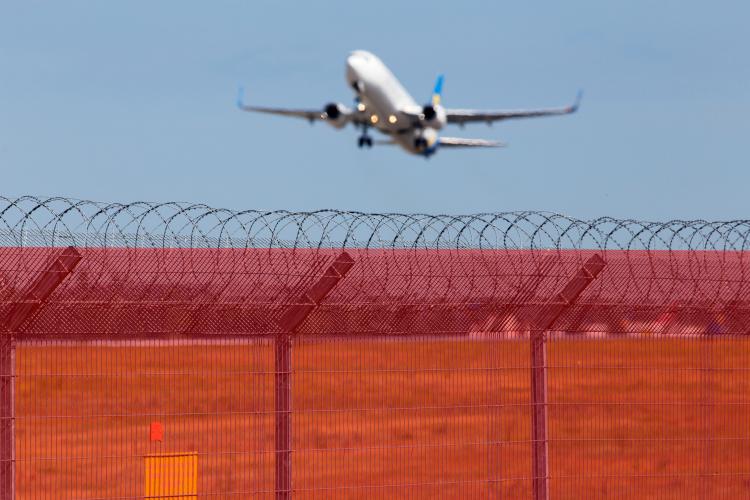Securing Airports - A Conversation with Optex‘s Johannes Faber
As airports worldwide confront mounting security challenges-from increasingly sophisticated intruders to the complexities of large-scale perimeters, innovative technology has become more critical than ever. GIT SECURITY International spoke with Johannes Faber, Sales Manager for the DACH Region at Optex, about how advanced sensing solutions, Lidar technology, and smart system integration are helping airports reduce false alarms, ensure rapid response, and adapt to an ever-evolving threat landscape.

GIT SECURITY: Mr. Faber, you’ve been working as Optex’s Regional Sales Manager – DACH for almost four years – how are the challenges facing the aviation industry changing?
Johannes Faber: The aviation industry is regaining a sense of normality following the significant challenges brought about by the COVID-19 pandemic. As passenger numbers, flights and freight soar, airports have once again become busy, bustling places, which helps fuel national economies and the profitability of the industry.
And while this outlook is positive, rising passenger numbers combined with staffing issues across the industry, constant security threats – with a number of recent high-profile incidents across Europe, the Middle East and Africa (EMEA) and beyond – airport security continues to become more and more complex. With ever-evolving threats and challenges, there is an increasing need for more advanced technologies and solutions to maintain stringent security standards.
Airports face a range of unique and varied challenges, and this is something that will only continue to evolve with the development of new technologies and artificial intelligence. In recent years, we’ve seen a rise in activists and protestors intentionally, and blatantly, breaking perimeter lines and entering unauthorized areas with the sole intent of blocking or disrupting air traffic. Equally, there is also a growing level of sophistication and coordination amongst intruders, meticulously planning their route to smuggle contraband or prohibited items in or out of the country, enter/exit a country illegally or even commit acts of terrorism.
Airports typically have large, and often complex, perimeters stretching for several kilometres. This scale makes it extremely difficult to ensure continuous, blind-spotfree surveillance using ‘traditional’ security methods, like fences and cameras, alone. Building a reliable security system requires combining multiple detection technologies that can distinguish genuine alarms and accurately identify the location of the intrusion. Technologies that allow seamless integration with video management systems (VMS), IP cameras, and access control further enhance the security system, enabling real-time monitoring that help ensure a faster response to alerts, as well as distinguishing between real threats and false triggers.
When it comes to designing and creating a comprehensive, fully integrated security system, it’s important to consider the specific needs of each airport, there is not a one-size-fits-all solution and a combination of different systems and technologies is required.
Given the unique challenges airports face in monitoring extensive and complex perimeters, what solutions does Optex offer to minimize false alarms and ensure rapid response to threats?
Johannes Faber: As critical infrastructure, addressing the unique challenges faced by airports requires a combination of advanced sensing technologies, layered security strategies, and flexible, site-specific solutions to deliver reliable, cost-effective protection.
Effective security starts at the airport perimeter. Fibre optic cable or fence detection systems can be installed to enhance security. Optex’s EchoPoint Distributed Acoustic Sensors, part of our leading FiberSensys portfolio, are particularly well suited for protection of large perimeters, with the ability to provide point detection of +/- 6m in a range of up to 100km. The versatility of the system‘s installation options – including fence-mounted, underground, and hybrid installations – provide the flexibility needed to address varying security requirements across different sections of an airport‘s perimeter. This adaptability has proved particularly valuable in areas, such as gates, where the system can’t be fence mounted, or in areas where traditional security measures would have been impractical or cost-prohibitive due to large civil engineering works.
In addition to fibre optic systems, the versatility of Optex’s Lidar technology is such that it is being utilised in a variety of applications to perform multiple functions that go beyond perimeter protection. Lidar works by creating an invisible laser wall and provides accurate, ultra-fast detection of an object’s size and location, ensuring nothing gets past. It is being used to protect vulnerable areas within the airport, including checkpoints, where Redscan Lidar sensors have been installed to provide precise monitoring and can alert of any intruders attempting to access the facility via unsupervised luggage checkpoints. The sensors are also being deployed within critical areas of the airport, including roofs and false ceilings around control rooms and server facilities, to enhance the protection of high-value assets. The technology‘s ability to work in complete darkness and distinguish between genuine and non-genuine threats has already helped to dramatically reduce false alarms.
Both our Lidar and fibre-based technologies provide enhanced environmental resistance, meaning their performance is not affected by changing and challenging conditions.
Our solutions can be tailored to specific airport zones and to address evolving security risks, including anti-tailgating sensors for staff-only areas, intrusion detection in the baggage claim areas, security checkpoints and boarding gates with laser sensor, as well as implementing specialised detection systems for aircraft hangars and fuel storage areas. These highly targeted applications help prevent unauthorized access and ensure comprehensive coverage across the entire airport.
How does Optex tailor its detection solutions to address these specific risks?
Johannes Faber: Optex tailors its detection solutions through a combination of advanced technologies and algorithms, flexible configuration and multi-layered integration within the wider security system.
To enhance detection and enable a faster response across the entire airport perimeter, a number of Optex’s sensors and detectors provide the ability to create multiple customisable detection zones. Our Redscan Pro and Redscan mini-Pro Lidar sensors, for instance, allow the creation of up to eight independent zones with the ability to configure the sensitivity, target size and output within each zone. This enables security teams to adapt detection parameters to the unique risk profile of each area, such as distinguishing between small animals, humans, or prioritising high-risk zones for faster response. The ability to set different thresholds for each zone minimizes nuisance alarms and ensures that alerts are relevant to the specific threat level and operational context.
Our technologies and solutions are intentionally designed to operate reliably in all environments and terrains, ensuring consistent detection performance regardless of the weather conditions, lighting or environmental changes.
Redscan Pro and mini-Pro sensors are Onvif Profile S compliant and fully integrable with all leading security management platforms. This allows for features like automatic target path fusion, which merges multiple sensor detections into a single, actionable alert, reducing information overload and enabling security teams to focus on genuine threats. Integrated camera modules in sensors like the Redscan mini-Pro provide visual verification and event logs, supporting rapid post-event analysis and fine-tuning of detection parameters.
Looking ahead, what innovations can we expect?
Johannes Faber: Our focus remains on continuous innovations that solve the problems of our customers. We are currently exploring and developing new technologies and solutions within our portfolio, with a focus on smart security, including our latest innovation in fence perimeter security and further evolving our award-winning Redscan Lidar series.















